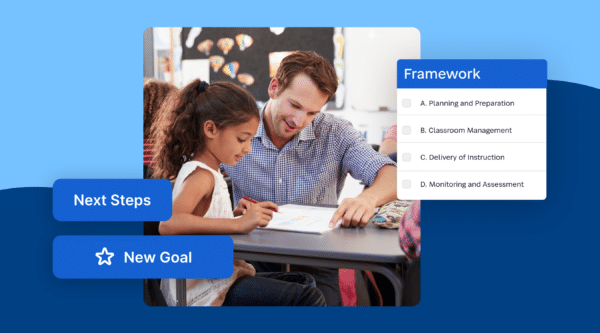

Teachers are at the center of school communication. They build trust with families, reinforce student learning, and serve as the primary touchpoint between school and home. Unfortunately, the communication tools provided to them frequently complicate their work rather than simplifying it.
When teachers cannot rely on the communication system, they find workarounds (or stop using it altogether). A disconnected, overly complex platform can lead to inconsistent outreach, decreased family engagement, and frustrated staff.
If your district is focused on improving family engagement and reducing staff burnout, it is time to ask: is your communication platform really meeting teachers’ needs? Here is how to find out (and what to do if the answer is “no!”)
1. Teachers Need Tools That Save Time, Not Add to It
Teachers already spend hours outside of contract time grading papers, planning lessons, and managing student behavior. Communication should not be another time-consuming task. If teachers need to switch between multiple apps, re-enter contact information, or manually translate messages, the platform is not supporting them effectively.
Warning signs include:
- Low usage of the district-preferred platform
- Teachers relying on outside apps or personal texts
- Complaints about lack of integration or delays
What to look for instead:
- One centralized platform that connects to your SIS
- Built-in translation in over 100 languages
- Mobile-friendly access for on-the-go communication
- The ability to send messages by text, call, or email without switching systems
With SchoolStatus Connect, teachers can access contact details, message history, and translation features in one place. It is built for ease of use, and it helps educators reach every family quickly and effectively.
2. Communication Should Support Relationships, Not Just Compliance
Most teachers are not thinking about board reporting or federal documentation when they message families. They are thinking about the relationship. Whether it is sharing a student win, reaching out with a concern, or responding to a parent’s question, communication is personal.
If your platform feels cold, impersonal, or transactional, teachers may disengage. Worse, families may stop reading the messages.
Key questions to ask:
- Can teachers personalize messages easily?
- Do they receive notifications when a message is read?
- Is two-way communication enabled with auto-translation?
- Are the tools helping build stronger connections, or just meeting minimum requirements?
The most effective platforms support high-quality, individualized outreach. Teachers should be able to send quick updates with context, and families should be able to respond in their preferred language.
Dig deeper with the Engagement Trends in School-Family Communications
3. Teachers Need to Feel Supported, Not Monitored
District leaders rely on communication analytics for good reasons: equity tracking, response data, and documentation. But if those reports are used to monitor teachers rather than support them, it can lead to mistrust.
Teachers are more likely to engage with the platform when they understand how it helps them, not just how it helps the district.
Best practices include:
- Providing training and onboarding with real classroom scenarios
- Sharing success stories of how communication improved student outcomes
- Using analytics to recognize proactive outreach, not penalize missed messages
- Creating a culture of shared ownership and continuous improvement
When districts demonstrate that they value and support teachers’ communication efforts, teachers respond with more meaningful participation.
Want to shift your communication culture? Download our eBook: The State of Family-School Communication
4. The Platform Should Help Reach Every Family, Not Just the Easy-to-Reach Ones
One of the biggest frustrations for teachers is the inability to reach families who need support the most. These might be families who speak a language other than English, have unstable housing, or lack consistent internet access.
A strong communication platform removes barriers—not just for teachers, but for families too.
Make sure your system can:
- Automatically translate messages
- Support families with multiple guardians or split custody
- Provide delivery tracking so teachers know when messages are received
- Offer options for phone calls, not just email or text
Your communication tools should extend a hand to every family, not just the ones who are easiest to reach.
5. Teachers Should Have a Voice in What Works
Too often, decisions about platforms are made without teacher input. That leads to frustration, underuse, and missed opportunities to build buy-in. Teachers know what works in real classrooms. Their perspective should help shape how platforms are evaluated, implemented, and improved.
How to bring teachers into the conversation:
- Survey staff before contract renewals
- Invite teacher reps to product demos or vendor meetings
- Host listening sessions to gather feedback on usability
- Use communication data to guide professional learning opportunities
When teachers are part of the decision-making process, they are more likely to fully use the platform and advocate for it among peers.
Supporting Teachers Supports Everyone
Teachers want to connect with families. They want to celebrate student progress, solve problems early, and keep caregivers informed. But they need tools that make that work easier, not harder.
If your communications platform does not save teachers time, simplify messaging, and build trust with families, it is not doing its job. The good news is that districts have options.
We built SchoolStatus Connect with teachers in mind. We streamline communication, automate translation, and centralize parent contact data so teachers can focus on what matters—supporting students and building strong school-home partnerships.
Take a closer look at how SchoolStatus can help your team communicate with confidence.
Request a demo today
Stay Connected
News, articles, and tips for meeting your district’s goals—delivered to your inbox.





